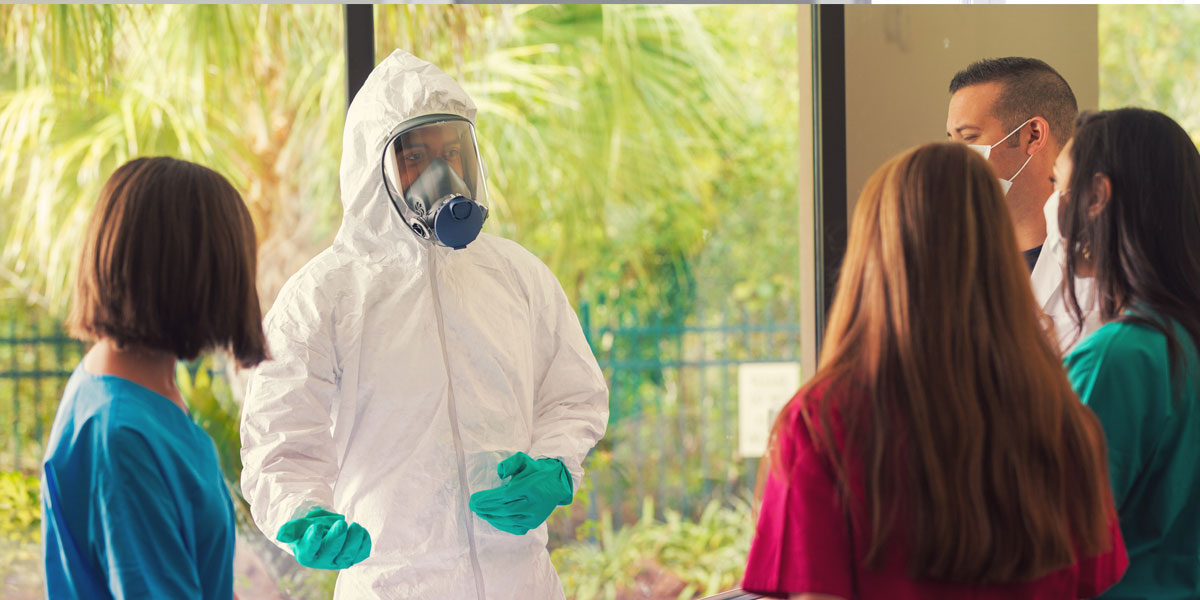When a natural disaster strikes, the first responders quickly act to assist people and get them back on their feet. However, there’s an equally critical role that most people probably aren’t familiar with — the managers who work to coordinate response and relief during disasters and calamities. Interagency Disaster Coordinators work to employ their resources with other organizations in a way that is most effective, efficient, and proportional to the disastrous event at hand.
The amount of coordination between agencies that is necessary varies depending on the type and scale of the disaster, but the goal is always to maximize the unique capabilities of each organization involved while allocating time and resources effectively. Even when there are no disasters requiring a large-scale coordinated response, all agencies involved must work together to rehearse their response and analyze their past successes and failures.
What Does Interagency Disaster Coordination Involve?
Interagency disaster management involves preparation, response planning, recovery planning, and analysis so that the necessary agencies are aligned to deal with federal and state emergencies. Here’s an in-depth look at key elements of interagency coordination:
Disaster Preparation
As the saying goes, “practice makes perfect,” and disaster response is no exception. Federal agencies that respond to disasters work together to come up with fully realized response plans for various scenarios, using data collection to inform them of the likelihood, scale and impacts of possible natural disasters.
The guidelines for this coordination are spelled out in various federal response protocols, such as the Federal Emergency Management Authority’s (FEMA) Federal Response Plan and the Department of Homeland Security’s National Response Plan.
A critical part of this planning is defining each agency’s role in the response, their budgetary responsibility, and a defined chain of command to which they answer. Once this is in place, directors, coordinators and first responders take part in extensive drilling and study to help them grasp their role in emergency management and the contingencies that may alter it.
Being able to rapidly respond to large-scale disasters means coordinators from all the federal agencies involved must front-load as much planning as possible before the disasters happen. This reduces the time they need to mobilize resources and people to respond.

Disaster Response Coordination
In the event of an emergency or overlapping emergencies, coordinators and directors will begin following their practiced response plans and the overlapping agencies will establish an Emergency Operations Center (EOC). Depending on the nature and scale of the disaster, the EOC may be physical, virtual or a hybrid version. The EOC is the meeting point for representatives of each governmental, nonprofit or private organization involved in the response, acting as a central hub of information sharing and coordination. If it is a physical location, it may also be used as an emergency shelter or a logistical center for physical resources like food, water or medicine, although this is not a requirement.
During and immediately after the disaster, all involved agencies will work to allocate resources in accordance with the information and developments flowing through the EOC. Another key part of response coordination is the dissemination of information to disaster victims and to the public, which can be done through agency representatives, elected officials or first responders. The messaging and content of these outward-facing releases will be decided depending on the needs of the agencies and the situation on the ground.
Disaster Recovery
Having a disaster recovery framework is part of preparation and planning. Immediately following a natural disaster, FEMA and other government agencies and organizations such as the Red Cross will take a more active role to return things to normal. This means assisting anyone who was impacted by the disaster, rebuilding or repairing damaged structures, and looking at medium- and long-term infrastructural, environmental and public health impacts. Depending on the nature of the disaster, the number of agencies involved will likely be more limited than the response phase.
Analysis and Long-term Planning
Once a reasonable threshold of recovery has been reached, response coordinators and representatives from each agency will begin the process of analyzing their response. Gathering data on the results of their efforts, creating a plan to mitigate long-term issues, and coming up with areas for improvement are all key parts of this. It’s important that this period also includes feedback from disaster victims, community representatives, and the nongovernmental organizations involved in the response and relief effort.
Learn More About Interagency Disaster Management at Columbia Southern University
If you’re interested in a career in disaster response or you are already in the field, our degree programs at Columbia Southern University have a lot to offer you. Studying emergency services management at CSU gives you a wide-ranging perspective on the discipline, in-depth knowledge of the federal, state and local agencies you might coordinate with, as well as the tools you need to effectively analyze and learn from successful and unsuccessful disaster response efforts.
To learn more about what we can offer you, take a look at our online degree programs in emergency services management.
Multiple factors, including prior experience, geography and degree field, affect career outcomes. CSU does not guarantee a job, promotion, salary increase, eligibility for a position, or other career growth.





